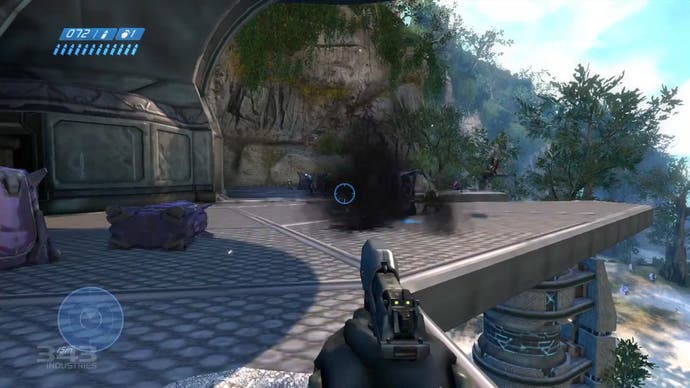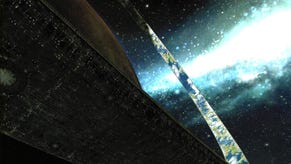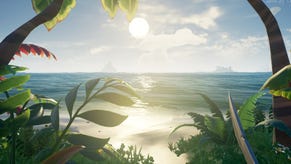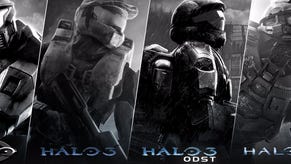Demo Analysis: Halo Anniversary
Is the remastered game sub-HD?
The recent release of new Halo: Combat Evolved Anniversary footage allows us to get our first good look at how the game really looks and performs, and puts into focus just how much of a good job Saber and 343 Industries have done in visually revitalising the title that many see as the coming of age of first person shooters on console.
Key to the appeal of the game is the ability to switch - in real-time - between the original Halo visuals and a new, "remastered" graphical facelift. 343 Industries say that the game effectively runs two engines simultaneously: a direct port of the original Halo CE code, with a new renderer layered on top, providing a substantial graphical upgrade that the developers hope makes the game visually competitive with the best shooters on the market today.
The new footage also allows us to confirm some previous findings we gleaned from previous trailers and Halo Waypoint videos. Many may well be disappointed to learn that, in all the assets released to date, Halo Anniversary doesn't render at a native 720p resolution. It's fairly evident just with some basic pixel counting that there's a 9:10 ratio between native resolution and the output of the 360 itself, translating into an 1152x648 resolution, consistent between both the remixed and classic modes.


Classic mode has no anti-aliasing, meaning that the look is very old-skool with lots of "jaggies" - though the renderer does produce a 16:9 output - something the original Xbox version didn't support. It'll be interesting to compare it with the original game running on Xbox 360 via backwards compatibility, where we see a much lower resolution - 640x480 - but backed up by 4x multi-sample anti-aliasing, something we don't see (thus far at least) on the Anniversary game's classic mode.
The resolution drop doesn't impact the full-fat remastered experience so much based on the footage released by 343 Industries thus far. Edges are smoothed off using what looks like a custom post-process form of anti-aliasing which seem to scale up nicely to full 720p. We do see what appears to be some sub-pixel artifacts common to post-process AA techniques but there doesn't seem to be too much impact on overall image quality.
In introducing the E3 demo, the game's executive producer Dan Ayoub, talks about the code being significantly out of date, with later builds looking much better. We'll be interested to see how much of an improvement we see in the final game, as 343's captures do show some issues.
Analysis of the footage does reveal that performance dips under 30FPS fairly regularly, with a combination of sporadically dropped frames (giving some "judder") along with split-second pauses. Considering the arbitrary nature of the dips in performance we would hope this will be resolved in the finished game. On the plus side, the footage also appears to be v-synced with no signs of tearing at all.
Looking in more depth at the revisions 343 and Saber have made to the original Halo, it's fair to say that the changes are very extensive indeed - starting with the opening menu screens, new geometry and normal mapping have been added to the iconic Halo ring, with new lighting and bloom giving more life to the scene, along with a new space background and asteroid field. Curiously, in Halo: Reach, Bungie combined original art from 2001 with a reduxed Pillar of Autumn, so right from the off here we are seeing a big bunch of new art.
343's chosen demo from the "Silent Cartographer" stage demonstrates how extensive the remastering process has been. Artwork, environment geometry and water are all-new, and there are new islands and distance fog effects giving depth to the scene. New foliage detail has been generously applied to the top of the island and the beach. Saber and 343 might have been tempted to roll out a repeated sand texture on the beach, but the new art is extensive here too: in addition to the grass, there's high-res normal mapping with rocky surfaces, more intricately detailed trees and more richly defined boulders. The Forerunner architecture has more geometry detail too.
The water effect has been considerably refined as well. Since Halo 3, water has been based on geometry and the tradition extends to the new Anniversary game too, with a more fluid look and sparkling highlights. However, the water splashes as you drive through the surf look rather out-of-place and will hopefully be fixed.
Screen space ambient occlusion (SSAO) is another modern day technique that has been applied to the game in the remixed mode - you first see it quite clearly when the view pans to the marines in the craft at the beginning of the clip. Here it does look a little "blobby" but the effect is understated and more subtle once we're into the gameplay proper.









